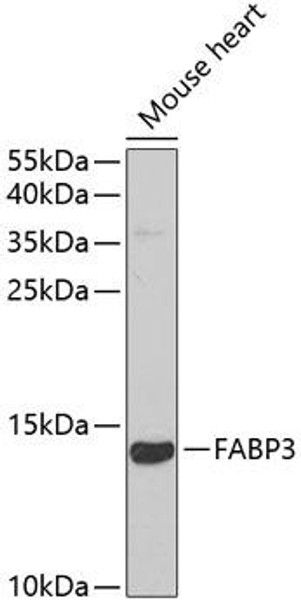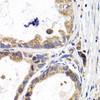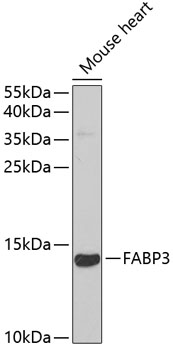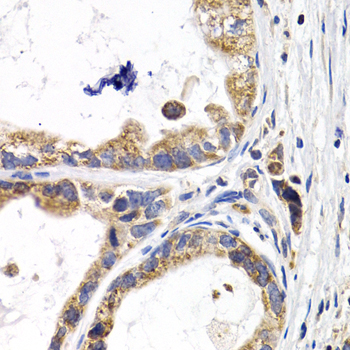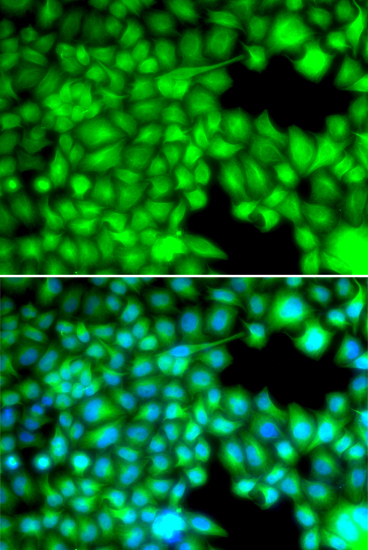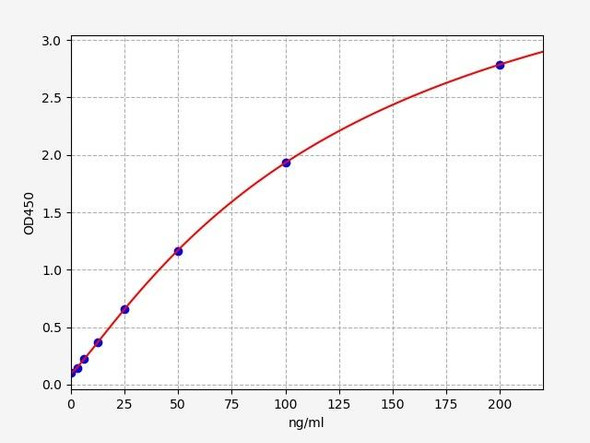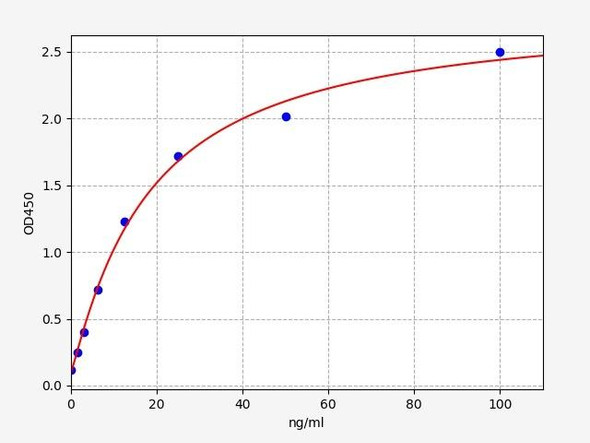Anti-FABP3 Antibody (CAB5312)
- SKU:
- CAB5312
- Product Type:
- Antibody
- Reactivity:
- Human
- Mouse
- Host Species:
- Rabbit
- Isotype:
- IgG
- Research Area:
- Signal Transduction
Frequently bought together:
Description
| Antibody Name: | Anti-FABP3 Antibody |
| Antibody SKU: | CAB5312 |
| Antibody Size: | 20uL, 50uL, 100uL |
| Application: | WB IHC IF |
| Reactivity: | Human, Mouse |
| Host Species: | Rabbit |
| Immunogen: | Recombinant fusion protein containing a sequence corresponding to amino acids 1-133 of human FABP3 (NP_004093.1). |
| Application: | WB IHC IF |
| Recommended Dilution: | WB 1:500 - 1:2000 IHC 1:50 - 1:200 IF 1:50 - 1:200 |
| Reactivity: | Human, Mouse |
| Positive Samples: | Mouse heart |
| Immunogen: | Recombinant fusion protein containing a sequence corresponding to amino acids 1-133 of human FABP3 (NP_004093.1). |
| Purification Method: | Affinity purification |
| Storage Buffer: | Store at -20'C. Avoid freeze / thaw cycles. Buffer: PBS with 0.02% sodium azide, 50% glycerol, pH7.3. |
| Isotype: | IgG |
| Sequence: | MVDA FLGT WKLV DSKN FDDY MKSL GVGF ATRQ VASM TKPT TIIE KNGD ILTL KTHS TFKN TEIS FKLG VEFD ETTA DDRK VKSI VTLD GGKL VHLQ KWDG QETT LVRE LIDG KLIL TLTH GTAV CTRT YEKE A |
| Gene ID: | 2170 |
| Uniprot: | P05413 |
| Cellular Location: | Cytoplasm |
| Calculated MW: | 14kDa |
| Observed MW: | 14kDa |
| Synonyms: | FABP3, FABP11, H-FABP, M-FABP, MDGI, O-FABP |
| Background: | The intracellular fatty acid-binding proteins (FABPs) belongs to a multigene family. FABPs are divided into at least three distinct types, namely the hepatic-, intestinal- and cardiac-type. They form 14-15 kDa proteins and are thought to participate in the uptake, intracellular metabolism and/or transport of long-chain fatty acids. They may also be responsible in the modulation of cell growth and proliferation. Fatty acid-binding protein 3 gene contains four exons and its function is to arrest growth of mammary epithelial cells. This gene is a candidate tumor suppressor gene for human breast cancer. Alternative splicing results in multiple transcript variants. |
| UniProt Protein Function: | FABP3: FABP are thought to play a role in the intracellular transport of long-chain fatty acids and their acyl-CoA esters. Belongs to the calycin superfamily. Fatty-acid binding protein (FABP) family. |
| UniProt Protein Details: | Protein type:Lipid-binding Chromosomal Location of Human Ortholog: 1p33-p32 Cellular Component: extracellular space; sarcoplasm; cytosol Molecular Function:protein binding; icosatetraenoic acid binding; cytoskeletal protein binding; long-chain fatty acid transporter activity Biological Process: response to drug; negative regulation of cell proliferation; cholesterol homeostasis; regulation of fatty acid oxidation; fatty acid metabolic process; response to insulin stimulus; phospholipid homeostasis |
| NCBI Summary: | The intracellular fatty acid-binding proteins (FABPs) belongs to a multigene family. FABPs are divided into at least three distinct types, namely the hepatic-, intestinal- and cardiac-type. They form 14-15 kDa proteins and are thought to participate in the uptake, intracellular metabolism and/or transport of long-chain fatty acids. They may also be responsible in the modulation of cell growth and proliferation. Fatty acid-binding protein 3 gene contains four exons and its function is to arrest growth of mammary epithelial cells. This gene is a candidate tumor suppressor gene for human breast cancer. Alternative splicing results in multiple transcript variants. [provided by RefSeq, Mar 2016] |
| UniProt Code: | P05413 |
| NCBI GenInfo Identifier: | 119802 |
| NCBI Gene ID: | 2170 |
| NCBI Accession: | P05413.4 |
| UniProt Related Accession: | P05413 |
| Molecular Weight: | 14858 |
| NCBI Full Name: | Fatty acid-binding protein, heart |
| NCBI Synonym Full Names: | fatty acid binding protein 3 |
| NCBI Official Symbol: | FABP3 |
| NCBI Official Synonym Symbols: | MDGI; FABP11; H-FABP; M-FABP; O-FABP |
| NCBI Protein Information: | fatty acid-binding protein, heart |
| UniProt Protein Name: | Fatty acid-binding protein, heart |
| UniProt Synonym Protein Names: | Fatty acid-binding protein 3; Heart-type fatty acid-binding protein; H-FABP; Mammary-derived growth inhibitor; MDGI; Muscle fatty acid-binding protein; M-FABP |
| Protein Family: | Fatty acid-binding protein |
| UniProt Gene Name: | FABP3 |
| UniProt Entry Name: | FABPH_HUMAN |

